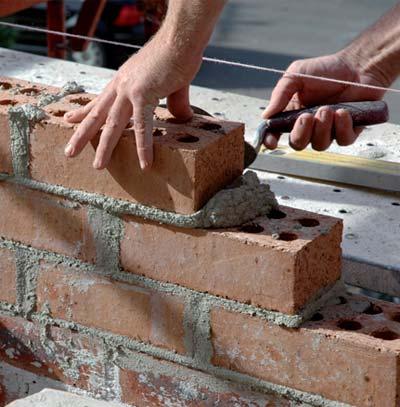
3 minute read
Craft and organisation – The product architecture of a building
CRAFT AND ORGANISATION
– the product architecture of a building
All architectural creations of considerable size have been related to the concept of differentiated crafts – provided that they have been made from more than a single material (e.g. adobe structures or the wooden hut). Skills, professional experience and tools related to a certain material or process have separate communities of artisans or craftsmen, each refi ning their knowledge and passing it on through generations. The components of the building have been a factor, to some degree, in defi ning these crafts (fl oors and roofs have been made by the carpenter, walls by the brick mason), but by far the most determining factors in the distillation of the crafts are the tools and materials. The involvement of the blacksmith in construction, for instance, was related to many different stages of the building process: structural anchors, reinforcement of masonry and production of locks and hinges.
Up until the massive industrialisation of building in the 1960’s, the division between the craft and profession on the one hand and the modularisation of architectural construction on the other was always identical. The building crafts could be seen as independent modules with clearly defi ned interfaces. Construction specifi cations (drawings) had a substantial set of conventions, allowing a few instructions to be clearly comprehended due to a large amount of implicit knowledge. The dimensions of the windows on the plan of a masonry
Wall building robot. Gramazio & Kohler ETH Zurich

building, for instance, is known to refer to the window sills, not to the sides of the actual carpentry. The carpenter knows that he has to subtract the size of the joint (for which he has responsibility). It is thus not necessary for the architect as a ‘specifi er’ to design this specifi c interface, only to defi ne where it is. If the architect wants to control the appearance of the detail, he can supply a drawing. If he does not, the craftsman’s default solution will be used, still with a high-quality result, as this detail will seem coherent in the particular building – always embedded in the implicit building tradition applied by the craftsman.
Today, the crafts and construction skills have almost disappeared from the construction industry in their traditional form due to increased technical and economical demands in architecture. Large standardised quantities, extreme precision on the technical side and a need for increased productivity with less manpower on the economic side, dissolve the essentials of the traditional manual workshop production and on-site adaptation. At the same time, the explosion in the number of choices within the building material industry has made it impossible for anyone to cope with all possible combinations in a traditional non-explicit (tacit) manner. Today, industrialisation is a condition, not an option. However, the organisation of the building sector does not refl ect this fact. One of the results is that there is no self-evident product structure, and in contemporary architectural construction, no clear interfaces. Neither does it have possibilities of fair competition, it has no incentives for product development or innovation with the suppliers and no environment for the development of larger, more optimised industries in the sector, which could drive the productivity and quality requirements forward. The construction sector has ended up in what has for some time been called a ‘lock-in’ situation, which is impossible to break by one single or a few actors.1 Industrialisation as seen in the product industry is thus far from reality, but is it a fruitful strategy to pursue in the construction industry? Or are the natures of production and construction fundamentally different from each other?
1 See e.g. The Danish Agency for Trade and Industry (2000), Byggeriets Fremtid – fra tradition til innovation (The future of construction – from tradition to innovation), The Danish Agency for Trade and Industry, Copenhagen. Section 1.4 and 1.5 (http://www.ebst.dk/publikationer/rapporter/ byg_frem/index.html)
Taking a closer look at the construction industry, strategies used by industrially oriented manufacturers can be divided into three different main strategies:
A. Traditional product delivery – Supplying simple building materials or small components around the remaining, but faint (craft-founded) interfaces, which still exist in the industry and focusing on the processes.
B. Integrated product delivery – Organising and developing their product as sub-suppliers of building assemblies with clear interfaces.
C. Turnkey delivery – Taking control of the entire supply chain, process and value chain by developing all-encompassing building systems.
The strategies are theoretical and in their plain form do not represent any specifi c manufacturers. In most cases, reality will show different mixes between two or all three strategies.
Strategy A
Strategy B
Strategy C










